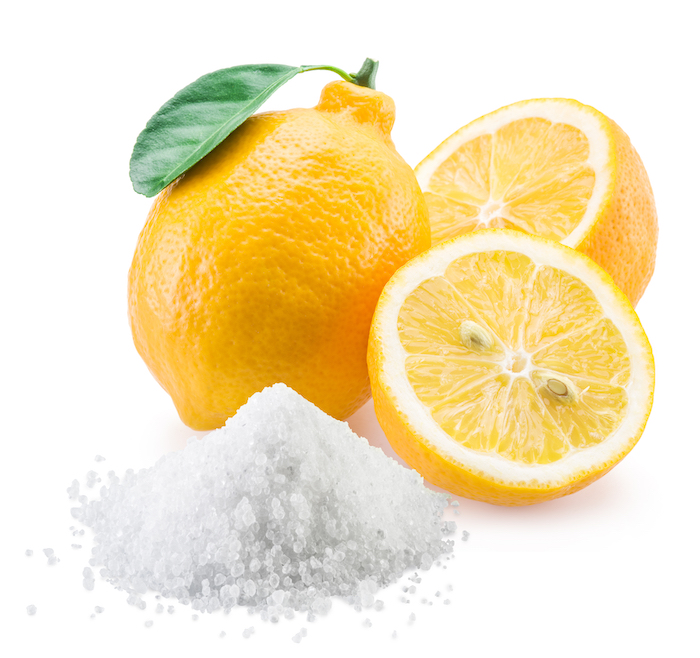Skim the ingredient list of many beverages, jams, canned vegetables, or frozen foods and you’re likely to come wideness one that you can unquestionably pronounce citric acid. Despite its prevalence, few consumers know what it is or where it comes from. (Though that first word should requite you a clue.
Citrus extract is a natural substance that is utilized in a wide assortment of items. You've undoubtedly experienced citrus extract in organic products or other food items, but at the same time it's utilized in cleaning items, beauty care products and drugs. Citrus extract isn't awful for you; as a matter of fact, it's even remembered to be harmless to the ecosystem.
Here’s what you should know well-nigh citric acid, including its origins, uses, and benefits.
What Is Citric Acid?

Citric wounding is an edible wounding naturally found in citrus fruits, and it’s what gives them their sour taste. It’s moreover commercially manufactured for a wide variety of uses in processed foods and beverages, cleaning products, pharmaceuticals, nutritional supplements, and cosmetics.
While lemons and limes may be increasingly wontedly known for their ascorbic acid (AKA vitamin C) content, citrus fruits unquestionably contain increasingly citric acid. In fact, citric wounding can worth for as much as 8 percent of the total dry mass of a lime or lemon!
The initial discovery of citric acid is credited to eighth-century Persian alchemist Jabir Ibn Hayyan. But it wasn’t until the late 1700s when Swedish chemist Carl Wilhelm Scheele first isolated citric wounding from lemon juice.
Over the next century, citric wounding became widely used in a variety of food, cleaning, and cosmetic products as a preservative, flavor-enhancer, and stabilizer.
In the 1900s, American supplies chemist James Currie found that a worldwide slime that causes woebegone mold on fruits and vegetables, Aspergillus niger, produces large amounts of citric wounding when fed a sugar solution.
This synthetic ways of deriving citric wounding revolutionized the market and became the new standard for its industrial production.
Citric Wounding Uses in Food
It’s used in supplies and beverages to uplift acidity, enhance flavor, and preserve ingredients,” explains Amy Goodson, MS, RD, CSSD, LD, a board-certified specialist in sports dietetics. “It can moreover be added to canned fruits and vegetables to protect versus botulism, a rare but serious illness caused by bacteria.”
Citric wounding is one of the most worldwide supplies additives in the world considering of the variety of uses and benefits it offers, Goodson adds.
Citric Wounding Benefits
While citric wounding offers a range of benefits for supplies and instillation manufacturers, Goodson explains that dietary citric wounding can moreover provide a number of health benefits for consumers as well.
1. Antioxidant properties
Some research has shown that citric wounding may goody antioxidant activity.
Antioxidants are substances found in foods like fruits and vegetables that may prevent or wait unrepealable types oxidative stress that can rationalization lamina damage. Citric wounding is associated with antioxidant benefits for helping to support the immune system as well as liver and smart-ass function.
2. Mineral absorption
Citric wounding can help your soul retain some key minerals. “Citric wounding enhances the bioavailability of unrepealable minerals, helping your soul to largest swizzle them,” explains Goodson.
Studies have supported a link between citric wounding and mineral absorption, calcium and phosphorus, in particular.
3. Reduce physical fatigue
While increasingly research is needed to understand its connection to physical fatigue, citric wounding may moreover goody energy levels.
A small human study reported in the Journal of Clinical Biochemistry and Nutrition found that oral consumption of citric wounding helped reduce physiological stress and fatigue in the soul without nonflexible workouts.
While the reasons for this miracle aren’t fully understood, it’s theorized that it may have something to do with the trundling of energy production in which citric wounding is a primary player.
Is Citric Wounding Bad for You?
Concerned that citric wounding might be bad for you? While 99 percent of the world’s production of citric wounding is now manufactured instead of derived from lemons, there is little vestige that citric wounding — plane the synthetic stuff — has health risks for consumers, says Goodson.
:max_bytes(150000):strip_icc()/Stocksy_txp4c529affsi0300_Medium_2638500-44124edd633b4e2b84b7c74adb69fbf5.jpg)
“Manufactured citric wounding is generally recognized as safe (GRAS) by the Supplies and Drug Administration (FDA). So consumers can finger unscratched consuming it as a part of supplies and beverages,” Goodson explains.
Do Humans Make Citric Acid?
The citrus extract cycle, which is otherwise called the Krebs cycle or carboxyl corrosive (TCA) cycle, is a biochemical interaction that happens inside the body's mitochondria, which are known as the force to be reckoned with of the phone. In this cycle, fuel particles — like amino acids, sugars and unsaturated fats — are oxidized. This cycle helps produce a large portion of the energy the cells in your body use. The citrus extract cycle produces citrate, however it's not equivalent to the citrus extract you eat in citrus organic products or other food items.












